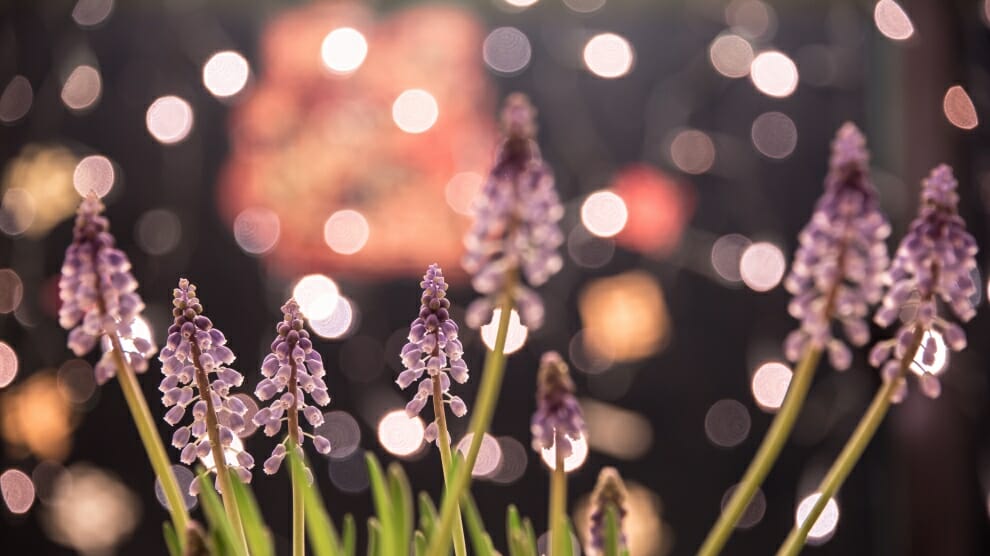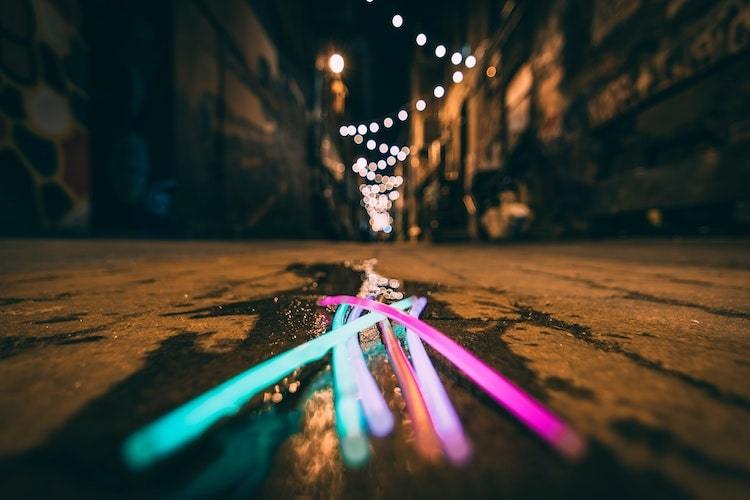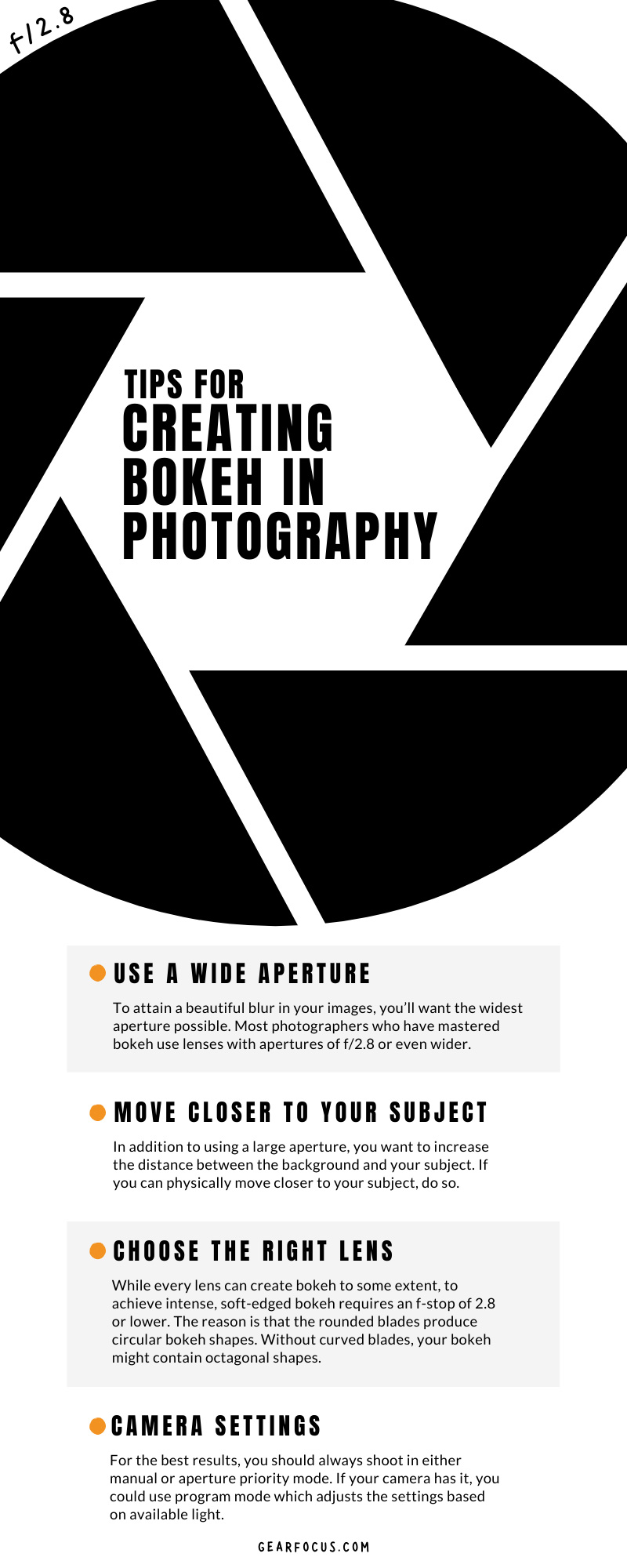As photographers, we’re always sharpening our skills so we can have endless creative options when taking a photo––after you’ve mastered the fundamentals, of course. You might be taking a portrait, for example, and in order to make your subject pop, you might choose to blur the background to have a shallow depth of field.
Maybe you want to take a photo of a cityscape at night and have the street or building lights appear orb-like. Additionally, you might be more of a nature photographer that wants their subject to be a leaf or wildlife. All these are excellent styles, and a shallow depth of field certainly isn’t limited to the previously mentioned styles.
In order to bring your subject out, you’ll likely blur the background (although you don’t have to, that’s the beauty of photography). All this blur is formally called
bokeh––so if you’re looking for tips for creating bokeh in photography, you’ve come to the right place. In our guide below, we’re going to teach you how to achieve that beautifully soft-edged blur in your photos that you’ve been aiming for all along. Read on to learn more.
Use a wide aperture

The key to getting a blurry background is your aperture, as you can’t achieve the blur you want if your f-stop isn’t set correctly. To attain a beautiful blur in your images, you’ll want the widest aperture possible. Most photographers who have mastered bokeh use lenses with apertures of f/2.8 or even wider, and the reason why is simple.
Going back to the fundamentals of photography, one way you achieve a shallow depth of field is by using a larger aperture. There’s a whole science behind why a wider aperture causes blur, but in general, it’s because of the angle of light reaching your camera’s sensor. An easy way to envision the phenomenon is to think of a funnel; one end is smaller than the other. When you’re taking your picture, you’re looking through the wide end towards your subject. The light, on the other hand, is looking at
you through the smaller end and seeing much more of your camera. In other words, your camera takes in light to focus on your subject, but once your subject is in focus, everything behind it is blurred.
Move closer to your subject

In addition to using a large aperture, you want to increase the distance between the background and your subject. There are two reasons you’ll want to move closer. First, your subject might get lost in the blur, and isn’t that the opposite of what you’re trying to achieve with bokeh? Additionally, if you’re far away from your subject but you have them (or it) in focus, the bokeh won’t be as intense. That said, if you can physically move closer to your subject, do so. Of course, if you’re shooting something like a mountain range or a city skyline, physically moving closer might not be an option without losing your frame. Using a zoom lens can do the trick for you as long as you still have a wide aperture.
Choose the right lens
We know you’ve been waiting for the fun part because every photographer loves talking about lenses. As with any other photography style and tactic, there are specific characteristics that make a lens especially great for creating bokeh. To reiterate, the first specification you need to look for when choosing a lens for bokeh is the aperture. While every lens can create bokeh to some extent, to achieve intense, soft-edged bokeh requires an f-stop of 2.8 or lower. The second specification you’ll want to look for in a lens is rounded aperture blades. The reason is that the rounded blades produce circular bokeh shapes. Without curved blades, your bokeh might contain octagonal shapes.
When you’re trying to achieve bokeh, prime lenses are arguably the best because they typically have the widest apertures. Some of the best prime lenses for bokeh (and so much more) include the following:
- Canon EF 50mm f/1.8 STM
- Sigma 35mm f/1.4 DG HSM ART
- Zeiss Otus 85mm f/1.4 Apo Planar ZF.2 Series
- Nikon 35mm f/1.8G AF-S DX NIKKOR
Now, sometimes a prime lens simply doesn’t cut it. You might be shooting a skyline from a distance, but you need to get closer in order to get the bokeh effect you want. The problem is that if you physically move closer, you’re limiting your shot. Luckily, zoom lenses have improved greatly over the years, so instead of physically moving closer, a zoom lens will come in clutch for you. Below are some of the best zoom lenses for bokeh.
- Nikon AF-S NIKKOR 70-200mm f/2.8E FL ED VR
- Sigma 18-35mm f/1.8 DC HSM
- Canon EF 24-70mm f/2.8L II USM
- Tamron 70-180mm f/2.8 Di III VXD
Every major manufacturer makes prime or zoom lenses that’ll work great to achieve bokeh. Every photographer knows that lenses get expensive real quick, so why not consider selling off your old gear to upgrade? That way you won’t have gear that’s keeping you from progressing in your craft.
Camera settings
For the best results, you should always shoot in either manual or aperture priority mode. If your camera has it, you could use program mode which adjusts the settings based on available light. But as with all types of photography, manual mode is almost always best. That said, you need to ensure your aperture is––you guessed it––at its widest setting. Without a wide aperture, intense bokeh isn’t possible. Additionally, you’ll need to adjust your shutter speed appropriately depending on what you’re taking a picture of and how much light there is.
While everyone has their own process for achieving bokeh, it all comes down to your lens and fundamentals. By following our tips for creating bokeh in photography you’ll have soft-edged blur in your images in no time. Of course, if you don’t have a lens with a wide aperture––that’s your first priority.
One of the best ways to upgrade gear is by selling your old gear or purchasing used gear. You can sell used camera lenses, bodies, tripods, and other accessories at
Gear Focus. If you’re not looking to sell your gear, you can always check out our massive inventory of new and used camera gear. Our company is founded by photographers for photographers, which means we understand exactly what you need. Just like you, we’re constantly working on improving our craft, and gear is one of the critical pieces to that equation. Our online marketplace is always adding new items, so check out our shop today.

 The key to getting a blurry background is your aperture, as you can’t achieve the blur you want if your f-stop isn’t set correctly. To attain a beautiful blur in your images, you’ll want the widest aperture possible. Most photographers who have mastered bokeh use lenses with apertures of f/2.8 or even wider, and the reason why is simple.
Going back to the fundamentals of photography, one way you achieve a shallow depth of field is by using a larger aperture. There’s a whole science behind why a wider aperture causes blur, but in general, it’s because of the angle of light reaching your camera’s sensor. An easy way to envision the phenomenon is to think of a funnel; one end is smaller than the other. When you’re taking your picture, you’re looking through the wide end towards your subject. The light, on the other hand, is looking at you through the smaller end and seeing much more of your camera. In other words, your camera takes in light to focus on your subject, but once your subject is in focus, everything behind it is blurred.
The key to getting a blurry background is your aperture, as you can’t achieve the blur you want if your f-stop isn’t set correctly. To attain a beautiful blur in your images, you’ll want the widest aperture possible. Most photographers who have mastered bokeh use lenses with apertures of f/2.8 or even wider, and the reason why is simple.
Going back to the fundamentals of photography, one way you achieve a shallow depth of field is by using a larger aperture. There’s a whole science behind why a wider aperture causes blur, but in general, it’s because of the angle of light reaching your camera’s sensor. An easy way to envision the phenomenon is to think of a funnel; one end is smaller than the other. When you’re taking your picture, you’re looking through the wide end towards your subject. The light, on the other hand, is looking at you through the smaller end and seeing much more of your camera. In other words, your camera takes in light to focus on your subject, but once your subject is in focus, everything behind it is blurred.
 In addition to using a large aperture, you want to increase the distance between the background and your subject. There are two reasons you’ll want to move closer. First, your subject might get lost in the blur, and isn’t that the opposite of what you’re trying to achieve with bokeh? Additionally, if you’re far away from your subject but you have them (or it) in focus, the bokeh won’t be as intense. That said, if you can physically move closer to your subject, do so. Of course, if you’re shooting something like a mountain range or a city skyline, physically moving closer might not be an option without losing your frame. Using a zoom lens can do the trick for you as long as you still have a wide aperture.
In addition to using a large aperture, you want to increase the distance between the background and your subject. There are two reasons you’ll want to move closer. First, your subject might get lost in the blur, and isn’t that the opposite of what you’re trying to achieve with bokeh? Additionally, if you’re far away from your subject but you have them (or it) in focus, the bokeh won’t be as intense. That said, if you can physically move closer to your subject, do so. Of course, if you’re shooting something like a mountain range or a city skyline, physically moving closer might not be an option without losing your frame. Using a zoom lens can do the trick for you as long as you still have a wide aperture.

